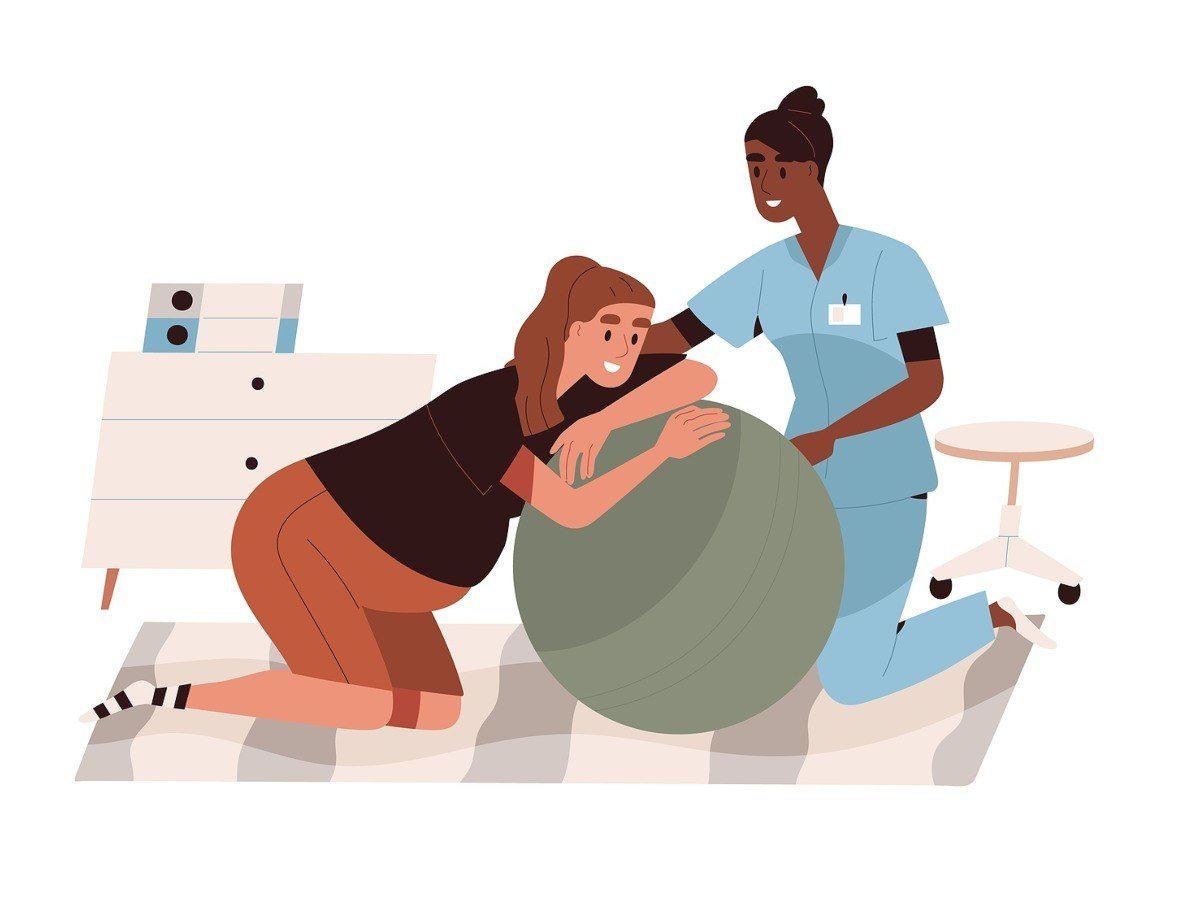-
Nurse Nhi (Columnist)
Whether you're a nursing student curious about labor and delivery (L&D) nursing or a registered nurse (RN) looking to specialize in maternity care, we've compiled a detailed overview of what you can expect from a career in the field.
Read on to learn about this fulfilling and meaningful nursing specialty vital in bringing new life into the world and supporting families during a truly momentous time.
L&D Job Description
Labor and delivery can be stressful for mothers, no matter how many times they have done it. As an L&D nurse (also known as a maternity nurse or obstetric nurse), mothers and their families will look to you for professional support, education, and advocacy during this transformative process and shortly after birth.
L&D nurses work in hospitals, birthing centers, and occasionally in home birth settings. Their primary role is to ensure the safety and well-being of the mother and baby throughout labor, delivery, and the immediate postpartum period.
Related: Best RN Jobs and Salaries in 2023
From the moment the mother is admitted into the hospital until the time of discharge home, L&D nurses follow both mom and baby to provide education, review the birthing plan, assess and monitor the mother's and baby's vital signs, assist with positioning, monitoring cervical dilation, support the mother's pain management, and provide comfort.
During delivery, they help to ensure a clean and safe environment, assist with medical procedures and complications, and administer medications. They are trained to recognize signs of complications or emergencies during labor and delivery to intervene and notify the healthcare team. Upon recovery and discharge, they provide health teaching on pain management and infection prevention to promote healing.
L&D nursing can be a very rewarding job as they play an essential role in the transformative experience of the mother in assisting in bringing new life into the world. They are integral to the multidisciplinary labor and delivery team to foster a holistic birthing experience for mothers, babies, and families.
L&D Nurse Responsibilities
Here are some of the key responsibilities and tasks of labor and delivery nurses in Canada:
- Continually assessing and monitoring the mother's vital signs, fetal heart rate, and evaluating labor progress. L&D nurses are trained to assess for any complications or changes that may require medical intervention.
- Offering holistic support to the mother during labor, helping with pain management techniques, positioning, and relaxation exercises.
- L&D nurses provide education about the birthing process, breastfeeding, and newborn care to ensure the mother is informed and prepared, as it can be a physically and emotionally demanding journey.
- Ensuring a safe and sterile environment for birthing. They may help with the mother's positioning, provide necessary equipment and supplies to assist obstetricians in birthing, and document the birth process.
- L&D nurses administer prescribed medications such as pain relief or medications to induce or augment labor. They monitor the mother for any adverse reactions and provide appropriate care.
- In case of complications during labor or delivery, nurses are trained to recognize and respond to emergencies quickly. If needed, they may assist with emergency procedures, such as cesarean sections or newborn resuscitation.
- After delivery, L&D nurses provide care to both the mother and newborn. They assist with breastfeeding, perform initial assessments of the newborn's health, and provide guidance on postpartum recovery and newborn care.
These are some of the primary responsibilities of an L&D nurse. However, responsibilities may vary depending on the regional regulations and organizational protocols. The overall goal of an L&D nurse, no matter where they work, is ultimately to provide a safe and positive childbirth experience for the mother and baby.
L&D Nurse Salary
The salary of an L&D nurse can vary widely based on factors such as location, experience, and level of education. According to the Bureau of Labor Statistics (BLS), a registered nurse's median pay is $77,600. Unfortunately, the BLS does not specify L&D in particular.
According to ZipRecruiter, the national average salary of L&D nurses is $96,039, with the highest-paying cities being:
- Ruhenstroth, NV: $122,700
- Santa Cruz, CA: $118,265
- San Rafael, CA: $118,365
- San Buenaventura, CA: $117,539
- Sunnyvale, CA: $115,904
How to Become an L&D Nurse
Becoming an L&D nurse takes several steps:
-
Complete a Nursing degree:
You'll need to complete an accredited nursing degree program. You can choose from three types of programs: an Associate Degree in Nursing (ADN), a Bachelor of Science in Nursing (BSN), or a Direct-Entry Master's Degree in Nursing (MSN). -
Pass the NCLEX-RN Exam:
After graduation, you'll need to pass the National Council Licensure Examination for Registered Nurses (NCLEX-RN) to obtain your license. This exam tests the knowledge and skills necessary for entry-level nursing practice. -
Gain Experience:
Before specializing, you'll likely need to gain a few years of experience as an RN. Some nurses gain experience in areas related to labor and delivery, such as postpartum care or neonatal nursing. -
Pursue Specialization in L&D Nursing:
After gaining some nursing experience, you can focus on L&D nursing. This may require additional coursework or certification, like the Inpatient Obstetric Nursing certification offered by the National Certification Corporation. You'll also need to gain experience specifically in labor and delivery, often by working in a hospital's maternity ward. -
Continuing Education and Recertification:
L&D nursing requires continuing education and recertification like all nursing professions. The specifics vary by state and by any certifications you hold.
Remember that the exact path can vary depending on your state's requirements, your previous education, and the specific policies of the hospitals or healthcare systems where you wish to work.

